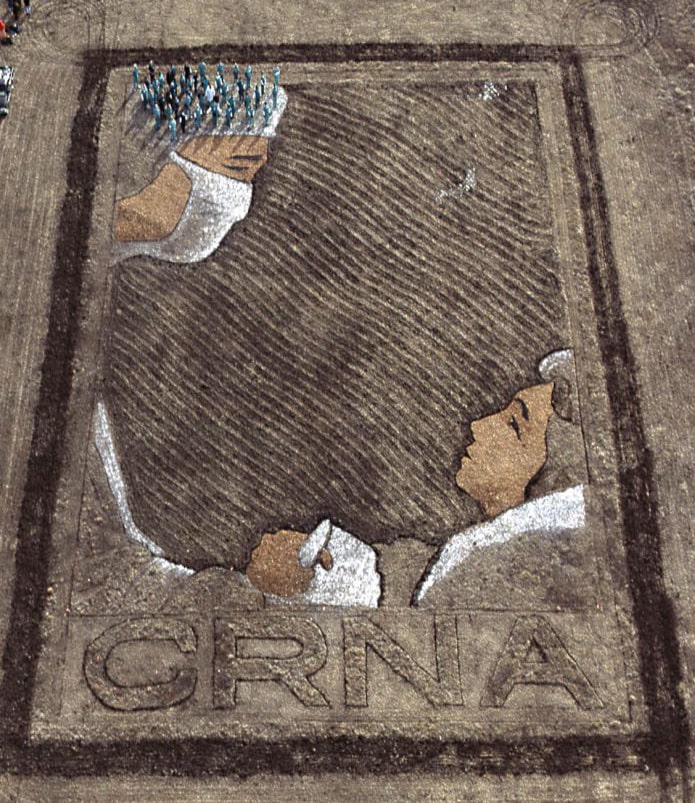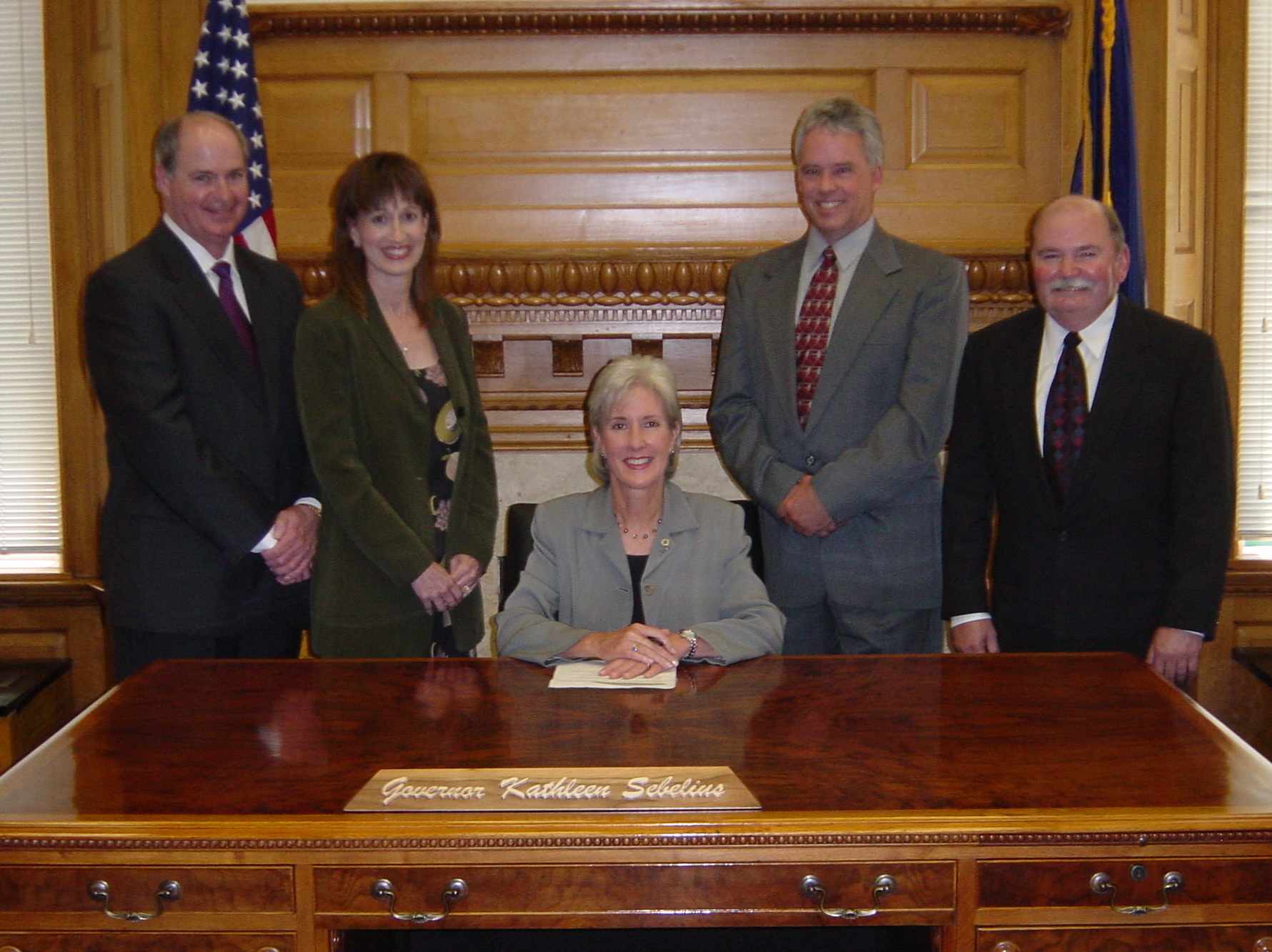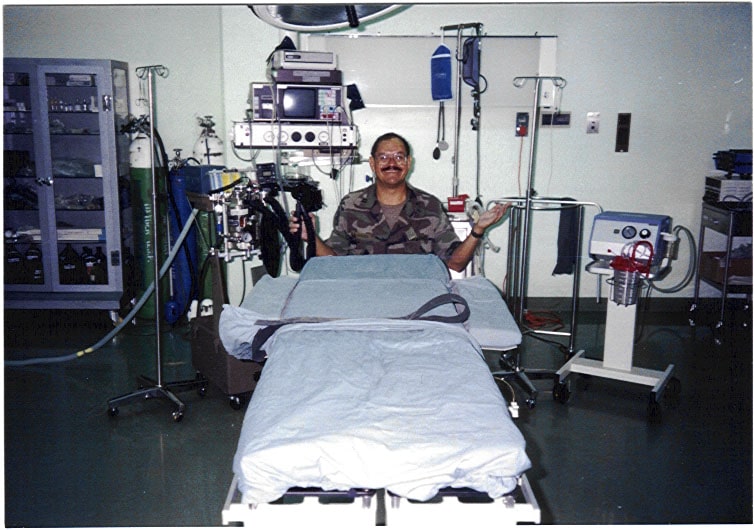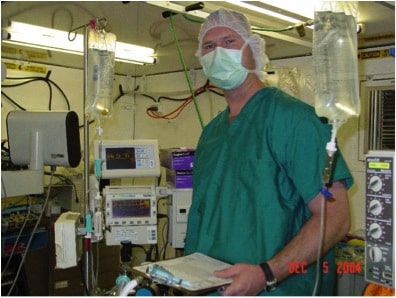 2001 In a field near Topeka, during Nurse Anesthetists Week, January 20, a nationally known Environmental Artist, Stan Herd, created a crop art depicting a CRNA about to undertake the anesthetic care of a small child. A group of CRNAs are standing in the CRNA’s hat. Promotional posters of the art were called “Outstanding in Our Field."
2001 In a field near Topeka, during Nurse Anesthetists Week, January 20, a nationally known Environmental Artist, Stan Herd, created a crop art depicting a CRNA about to undertake the anesthetic care of a small child. A group of CRNAs are standing in the CRNA’s hat. Promotional posters of the art were called “Outstanding in Our Field."
KDHE removed the physician supervision requirement of CRNAs under the newly revised and release ambulatory surgery center (ASC) regulations.
The Provider Resource Network is moved to inactive status per a vote by KANA.
2003 Governor Sebelius informed Medicare that Kansas would opt out from the physician supervision requirement of CRNAs. Kansas became the seventh state to “opt out” of the federal supervision rule and defer to Kansas state law on the oversight of CRNAs.


 Tom McKibban (left), CRNA in El Dorado, becomes president of AANA.
Tom McKibban (left), CRNA in El Dorado, becomes president of AANA.
KANA recognized Lt. Colonel Don DeGrazio CRNA (right) with a Distinguished Military Service Award on July 19.
2004 Newman University Nurse Anesthesia Program now directed by Sharon Niemann, CRNA, MHS.
 2006 KANA recognized Captain Kenneth Bates, CRNA with a Distinguished Military Service Award.
2006 KANA recognized Captain Kenneth Bates, CRNA with a Distinguished Military Service Award.
2007 Carol Elliott CRNA, PhD. steps down as Chair of KU Department of Nurse Anesthesia after serving in the role of clinical and academic educator as well as Program Director from 1973-2007.
A practice opinion by an attorney for KSBN notified the Kansas Department of Health and Environment (KDHE) that CRNAs could not write orders for pre-op or post-op patient needs and that nurses could not follow any orders written by a CRNA.
After testimony to the Kansas State Board of Nursing (KSBN) ARNP Committee and KSBN, and a special KSBN board meeting, KANA made a decision to put the practice opinion on hold until a Registered Nurse Anesthetist (RNA) Task Force could identify the professional practice of anesthesia by CRNAs in Kansas and make recommendations to the board.
KANA receives AANA Public Relations Award for Best Promotional Effort during National Nurse Anesthetists Week.

2008 A meeting with interested stakeholders: KANA, Kansas Hospital Association, Kansas State Nursing Association, Kansas Medical Society, Kansas Association of Anesthesiologists and KSBN was held in Topeka to discuss the issue of writing orders. A temporary solution was recommended allowing medical staffs to authorize CRNAs to select and initiate orders for pre-op, inter-op and post-op medications and tests as part of the anesthesia plan of care.
Donna Nyght, CRNA, DNP becomes Chair of KU Department of Nurse Anesthesia.
2009 KANA again receives AANA Public Relations Award for Best Promotional Effort during Nurse Anesthetists Week.